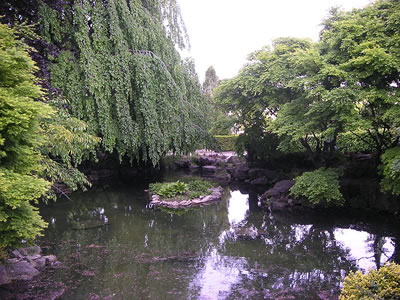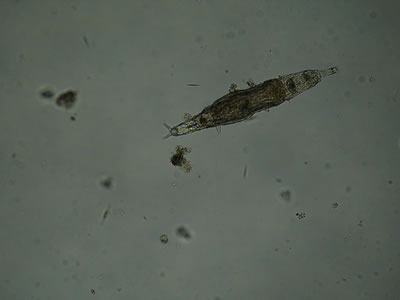A pond is a relatively small body of water. Ponds are usually smaller than lakes.
 Ponds contain standing water. However, most ponds are fed by springs or streams and most have an outlet, so a small current passes through the water and the water gradually changes.
Ponds contain standing water. However, most ponds are fed by springs or streams and most have an outlet, so a small current passes through the water and the water gradually changes.
Huge numbers of plankton - drifting organisms that are mostly microscopic in size - float through ponds.
Some of these organisms are plants, some are animals, some are bacteria and some are archaea.
Bacteria and archaea are the two types of prokaryotes - one-celled organisms that do not have nuclei. Prokaryotes were the first living things to have existed on Earth.
 Most of the photosynthesis in ponds is performed by plankton known as phytoplankton.
Most of the photosynthesis in ponds is performed by plankton known as phytoplankton.
Diatoms are usually the most common form of plankton in ponds.
Dinoflagellates, a type of plankton that has a flagellum - a tail-like structure that assists with locomotion - are also common in some ponds.
 Zooplankton, animal forms of plankton, can include rotifers and tiny crustaceans.
Zooplankton, animal forms of plankton, can include rotifers and tiny crustaceans.
Enough light penetrates through to the bottom of most ponds so that photosynthesis can take place at the bottom
At the bottom of a pond, Chlorophyta, a type of green algae, may wave filaments back and forth in the current while diatoms turn the mud a golden-green color. Sometimes green algae can become so abundant in a pond that the whole surface of the pond turns green.
Large emergent plants - plants that pierce the surface of the water and grow partially in the air - such as irises, may grow around the edge of a pond, but there usually aren't any rooted plants growing in the center of a pond.
Plants may grow within the water, some floating on the surface and others remaining submerged.
Mussels may live at the bottom of a pond.
Fish can be found mostly around the edge of a pond, where they can hide among plants.
Large predatory fish, such as pike, may swim through a pond in search of prey.
Fish may eat insects and other invertebrates, or other fish.
Numerous insects can often be found above and around ponds.
Frogs eat these insects.
Herons, kingfishers and otters come to ponds to eat pond fish.
As dead creatures sink to the bottom of a pond, large amounts of organic matter accumulate at the bottom.
Detritivores (also known as saprovores or saprophages) - organisms that digest and decompose dead organic matter (detritus) - break it down. Most of these detritivores are bacteria and fungi.
However, there may also be larger detritivores, for example, tubifex worms, at the bottom.